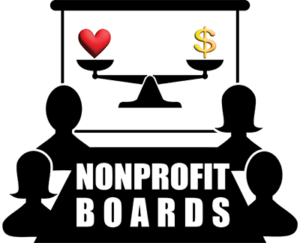
As noted last week, for many “cause” nonprofits, a principal role of governing boards is raising funds for the organization. To accomplish this, governors are expected to contribute in two ways: directly and indirectly. Often, governors are inexperienced in contributing through the indirect process, namely asking others for money.
For governors to be successful fund raisers, they must be equipped with the best information possible regarding the prospective donor. If professional staff members aren’t available, then governors need to learn all they can about prospective donors from people who know them well. It’s important to do market segmentation, to understand the giving range for prospective donors. It’s also critically important to cultivate donors. In approaching a prospective donor, the best case combines head and heart—appeal to the donor intellectually and emotionally.
In reflecting on the fund-raising mistakes I’ve made, while serving as UA chancellor, I’m sure I made every kind of mistake possible. In reflecting on them, I identified seven types of fund-raising mistakes. The worst is not asking. I was surprised at the number of affluent people who hadn’t been asked to contribute to the UofA, even though it had served them well. I recall meeting with one prospective donor who was incensed the university hadn’t approached him. He said he was just as capable as others who were lauded and courted by the university, so he was going to give money to another college—he did and a sizeable building is named for him.
A second mistake I made was asking for the wrong amount. Asking for too little is worse than asking for too much. Seldom will people give more than they’re asked to give. If you ask for too much, you can always indicate you’re focusing on the long-term and ask what level of giving seems feasible. Often, fund raisers believe you can’t go back to the same donor multiple times; they forget, in business, the best customer is a return customer. Take care of your donors, build a relationship, and they’ll continue to provide support when they see their support makes a difference in the quality of the program and improves opportunities for others.
A third mistake I made was asking at the wrong time. During a downturn in the economy, very wealthy people can be worried about how long it’ll take for the economy to rebound. As with many things, timing is everything in fund raising.
The fourth type of mistake I made was asking for money to support the wrong thing. I learned we needed to tailor the ask to things of particular interest to the prospective donor. The key is learning what turns on the prospective donor.
A fifth mistake I made was asking the wrong person for money. We encountered situations where different family members felt quite differently about donating money to worthy causes. So, we not only needed to pick the right time, but we also needed to pick the right person.
My sixth mistake was having the wrong person make the ask. Relationships are critically important in fund raising. We needed to match people with prospective donors, based on relationships. We needed to determine who should make the ask.
A seventh mistake is asking for money. This mistake occurs frequently with cold calls, in which there is insufficient knowledge regarding a person’s interest in and understanding of the needs of the organization. Often, it’s better to ask the person to become involved.
Despite all the mistakes I made, we raised more than a billion dollars in UA’s Campaign for the 21st Century. The lessons I learned were don’t give up, persist, do my homework, shape my message, and assemble a strong team to support me. Fortunately, we had a world-class development team who helped me overcome numerous mistakes.
Another thing I learned was don’t be afraid to ask. Mary Lib asked how I could ask someone for millions of dollars. After all, I was the world’s worst encyclopedia salesman, quitting after two days in the summer between by sophomore and junior years of college. I told her that I didn’t think I could ask someone for money for myself, but it was easy for me to ask someone for money to benefit current and future students.
Next Week: Nonprofit Boards—Part 3